One of the most remote spots on Earth, Easter Island is a tiny speck of land possessing more mystical pull than almost any other spot on the planet. Located in the middle of the Pacific Ocean, yet a part of Chile, this Polynesian island is a treasure trove of cultural intrigue, stunning landscapes, and historical uniqueness.
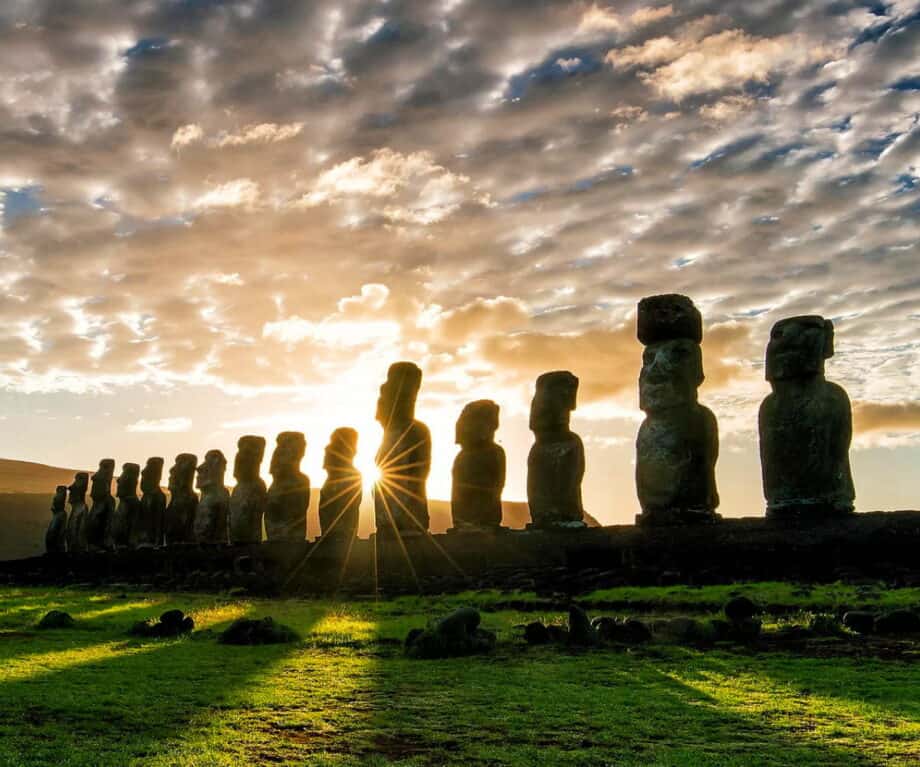
Known locally as “Rapa Nui,” the island emanates a magnetic, mysterious and otherworldly vibe, all of which make Easter Island one of the all-time highlights of South America. Whether you’re a history enthusiast, an outdoor adventurer, a nature lover, or a family looking for an extraordinary getaway, the island checks all the boxes.
Here, we explore what we consider some of the most fascinating and entertaining attractions and activities that make this UNESCO-declared World Heritage Site a must-visit destination.
(As a bit of trivia, this volcanic island was named by a Dutch navigator who “discovered” it on the eve of Easter in 1722. Nonetheless, the people of the island continue to call their island “Rapa Nui.”)
1. Traditional Polynesian Performances
By attending a traditional Rapa Nui performance, you’ll be immersed in the expressive and vibrant Easter Island culture. At one of these shows, your full attention will be captured by the live music, dance moves and stories that reflect the spirit of the island’s Polynesia past, which today’s Rapa Nui community carries on. The complex drumming, intricate dress and evocative choreography bring to life the island’s myths and tales handed down from generation to generation.

The exotic dances of Rapa Nui are usually used to tell a story, with amazingly energetic dancers often wearing the traditional dress of flowing skirts made of feathers or grasses. The engaging music of Rapa Nui goes along with Easter Island’s traditional dances. The riveting music and captivating dance combine to create an exceptional experience that you won’t soon forget.
2. A chance to marvel at the moai
Not only is this volcanic island scenic in its own right, but witnessing its legendary “moai” statues up close stirs a sense of awe, mystery and wonder.

Undeniably Easter Island’s biggest draw, these imposing statues were carved from huge rocks somewhere between 1200 and 1650 A.D. Using a simple stone chisel called a “toki,” the hands of little-known ancient Polynesians crafted these iconic figures. The statues range in height, with some towering at over 30 feet. Each moai is believed to represent deceased ancestors and holds significant cultural and historical value. Many theories have emerged as to the reasons for their various locations, how they were physically transported or indeed carved at all.
Each of these commanding figures is said to represent the spirit of individual tribespeople, which is why every moai has different characteristics from the next. Today, it’s estimated that over 900 of these statues are strewn across the island, all slightly different and few being fully understood. For wide-eyed visitors, the best course of action is simply to see them for yourselves, and with so many of them peppering the island, you don’t need to go far to find one.

To fully appreciate the moai statues, consider hiring a local guide who can provide in-depth historical and cultural insights. Visiting at sunrise or sunset offers a magical and serene atmosphere, perfect for contemplation.
3. The subline comforts of luxury Rapa Nui accommodations
Any one of the handful of high-end hotels on Easter Island will allow you to come into direct contact with the history, traditions and legends of this mysterious Polynesian paradise. At the same time, though, you can indulge in touches of luxury infused in every element of your sublime accommodations.
During your stay, enjoy everything from complimentary minibars to deep-soaking tubs, stylish color schemes and private terraces.
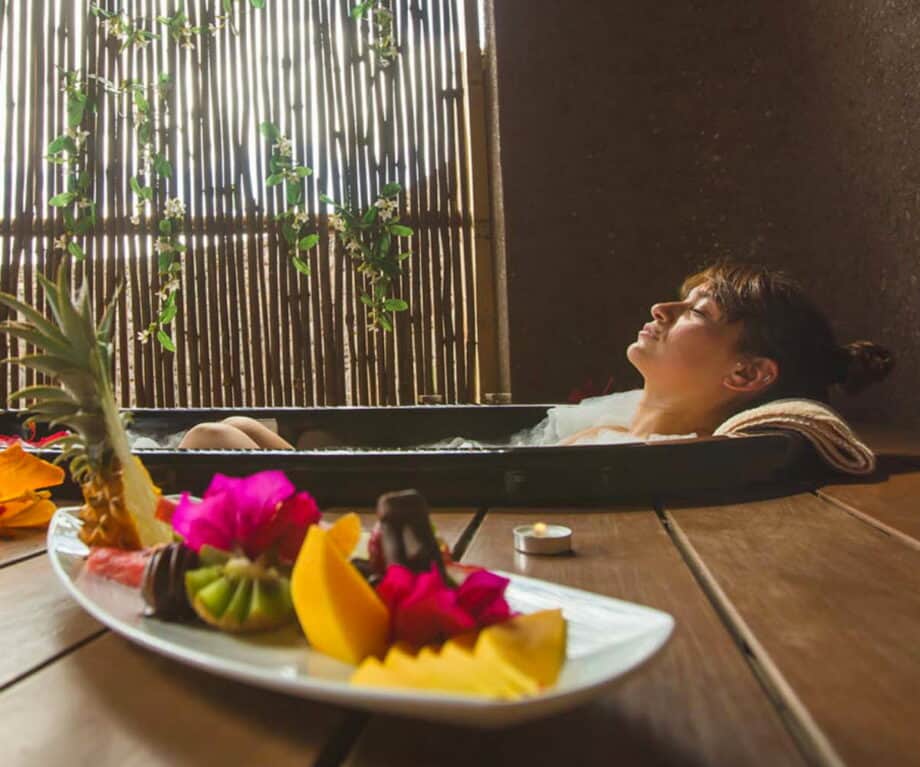
In that guides and various tours are provided by top-notch Easter Island hotels, as soon as you’ve had a chance to unpack and settle into your room, your expert attendant will go over your detailed island itinerary that you’ve selected.
These excursions include an entire range of activities, from diving, trekking, cultural contact, boat rides, and fishing, to visits to emblematic island sites, horseback riding, town walking tours, scuba diving, sailing and more. All of this is an invitation to renew your soul, be a protagonist, and at the same time be an active spectator of an ancient culture.
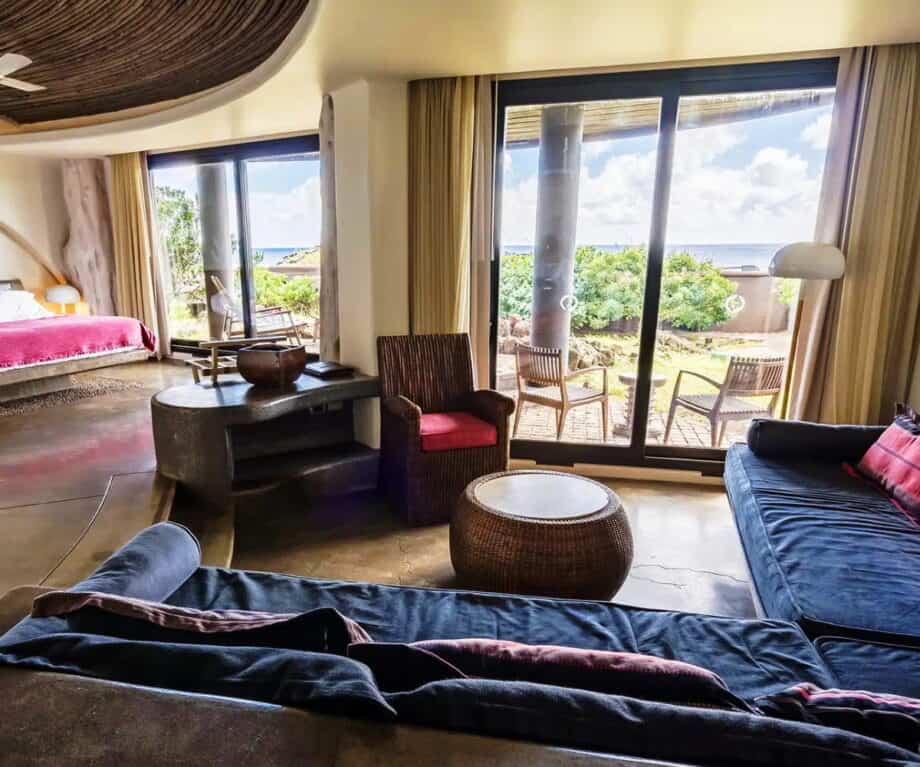
At the end of any full day of exploring, you can choose to spend a lazy afternoon at your eco-outdoor pool or your hotel’s friendly spa. At your spa, massages and treatments are provided with natural ingredients from the island that will help you renew your body and spirit after a long day of activity.
Your stay may well be at the Hangaroa Eco Village & Spa, one of the leading hotels on Easter Island. Hangaroa aims to be a sustainable hotel, while the architecture of its buildings pays homage to a longstanding culture that defines this magical island. For example, its grass-roofed units are erected with larch-wood pillars and stone walls that mimic the ancient huts that were once scattered all over the island and that the Rapa Nui people called home
4. Delectable Rapa Nui cuisine
If you travel thousands of miles to get here and want to take in the full experience, be sure to treat your palate. You can literally taste Easter Island’s unique culture by savoring its distinctive cuisine, learning more about the local traditions and fresh produce.

Since it’s an island, it’s logical that the cuisine of Easter Island is based on fish and other seafood. Fishing has been one of the principal and traditional activities of Rapa Nui. Easter Island’s staple ingredients, therefore, include seafood such as tuna, mahi mahi, lobster, and rape rape (a small lobster), as well as agricultural produce like sweet potato, chicken, tarots and yam.
For cultural explorers, foodies, and those seeking an immersive sensory experience, Easter Island represents a chance to relish authentic Polynesian fare. Exploring the culinary offerings of the island is an essential part of experiencing its rich Polynesian culture and traditions.
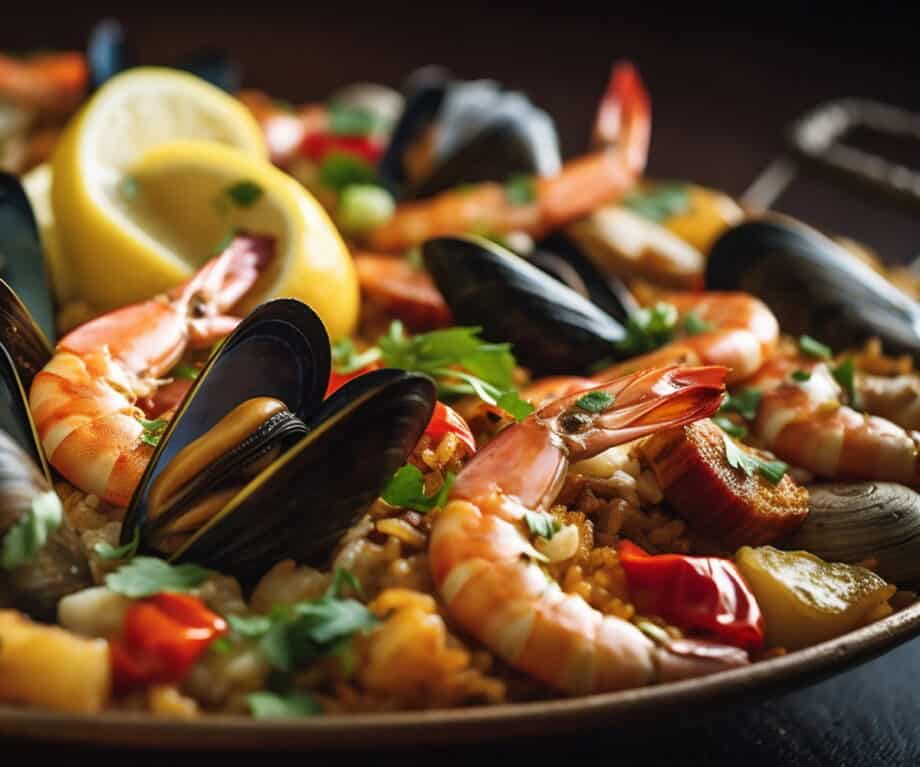
For an even more authentic island experience, we encourage travelers to venture outside their hotels and beyond the main tourist areas to discover local eateries and family-operated restaurants that offer genuine and unpretentious Polynesian dishes. There, you can interact with the chefs, proprietors and even local patrons to gain insights into the ingredients and cooking techniques used in traditional Rapa Nui cuisine.
5. Astounding Rapa Nui stargazing
The remote location of Rapa Nui makes it one of the most phenomenal places to admire the night sky. When the sun sets the stars come out in all their glory!
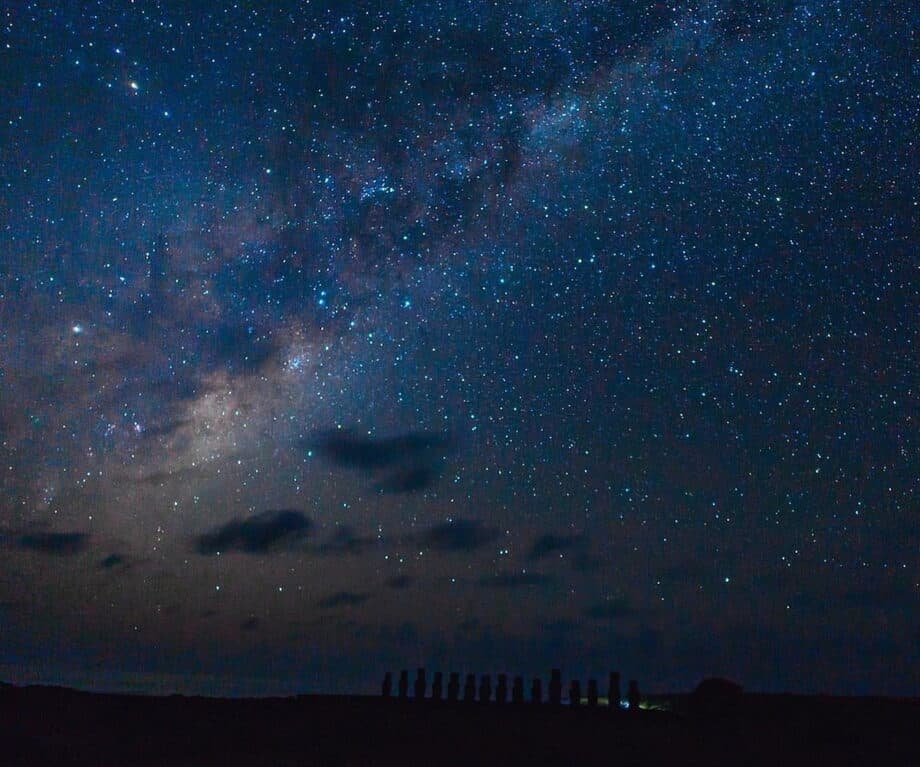
If you live in a city and don’t have the chance to get out into nature all that often, you’ll be absolutely blown away by the clarity and clearness of the night sky on Easter Island!
The best part is you don’t even have to leave your hotel to see the Milky Way. Even if you happen to be on the island during a new moon, the lights from the town of Hanga Roa have only a small effect on the sky, meaning you can see everything from right there.
6. Eye-opening trekking tours on this magnetic island
Hiking — walking — trekking… whatever the term used, it’s one way — if not the best — to discover Easter Island. The island is a paradise for hiking lovers! If you’re passionate about nature, culture and adventure, you’ve come to the right place. Off the beaten path, everything contributes to fantastic walks: the climate, the landscapes, the history and the geography. Guided walks give you access to areas of the island and its archaeological remains that can’t be seen other than on foot.

Imagine walking along ancient paths, surrounded by the monumental moai statues that have made Rapa Nui internationally famous. Walking tours allow you to get closer to these enigmatic witnesses of the past and discover their fascinating history. In truth, simply taking a walking tour of Easter Island is one of the greatest, most enjoyable and memorable experiences while there.
7. Unwinding on Anakena Beach
Venturing across the tiny island, you’re likely to find yourself amazed by the charm of paradisiacal Anakena Beach, a picturesque and inviting oasis nestled along the northern coast of Easter Island.

Along with the beach’s white sands, warm turquoise waters, and beautiful palm trees are moai statues are set on two ceremonial platforms. This is a perfect place where archaeology, landscape and recreation all meet, making it an ideal retreat for relaxation and rejuvenation. In addition to its natural beauty, Anakena Beach holds historical significance as the landing site of the island’s legendary founder, Hotu Matu’a.
Nature enthusiasts, sun-seekers, and families looking for a tranquil and family-friendly beach experience will find Anakena a delightful tropical escape. The gentle waves and shallow waters are suitable for children and less experienced swimmers.
8. Rapa Nui’s volcanic wonders
The triangular shape of Rapa Nui is the result of three principal volcanoes that merged to form the present island, with each volcanic site now providing compelling experiences for adventurous travelers.

The first of these sites is the expansive Rano Kau volcanic crater, where a hike to the top rewards adventurers with a sense of achievement and unparalleled vistas. Climbing some 300 ft (100 m) above sea level, you’ll see almost a mile across the crater and get a great panoramic view of the island as a whole.
Peering down 200 meters below Rano Kau’s ridge, you’ll also see a crater lake nearly covered in a bog of floating totora reeds. Resembling a giant witch’s cauldron, Rano Kau is a wild greenhouse of endemic biodiversity.
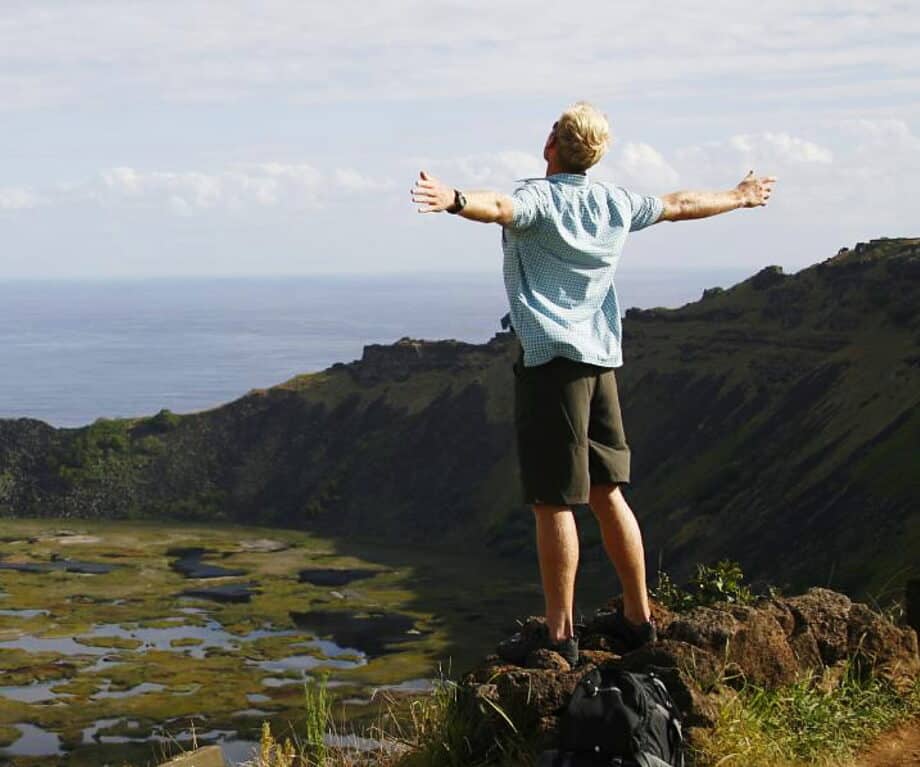
But there’s even more here. On a thin strip of land between the crater and a sheer cliffside that drops down to the cobalt-blue ocean below, teeters the ceremonial village of Orongo. Here, you’ll discover ingenious ancient building techniques that have stood the test of time, as well as one of the most complete sets of petroglyphs in the region. These petroglyphs, also known as kohau rongo-rongo, feature symbolic motifs, anthropomorphic figures, and geometric patterns, each holding significant meaning and reflecting the ancestral beliefs of the Rapa Nui people.
Wandering between and inside the structures is a great Easter Island experience and something not to be missed.
A second volcanic site that travelers can visit is the Rano Raraku volcanic crater, which was the virtual “birthplace” of the moai, as it was a quarry of statues. Here, some 400 handsome heads and torsos rest in various stages of carving, still waiting to be transported across the island to their various ahu (the flat mounds or stone pedestals upon which the moai stand). While the heaviest erected moai statue weighs 86 tons, one of the quarry’s unfinished sculptures would, if completed, weigh between 145–165 tons and stand an astounding 69 ft (21 m) tall.
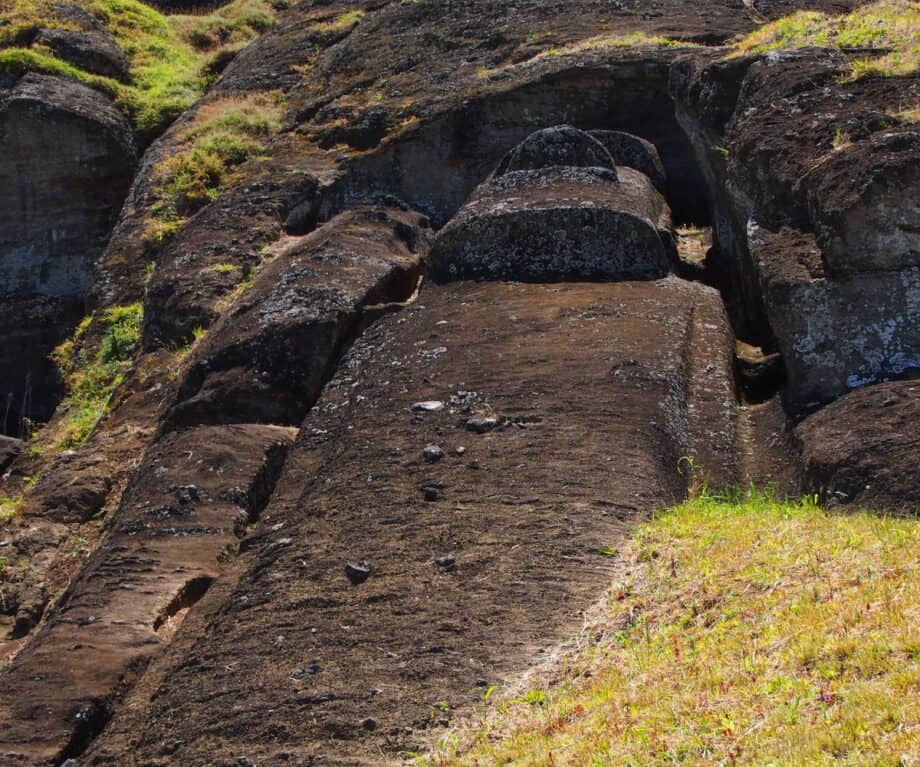
The third volcanic site, the Poike Volcano, is in a more isolated location with more difficult access, which makes it a less visited spot. However, this mysterious volcanic area holds secret corners and ancient legends that invite travelers to discover and learn more about the island’s past.
Around Poike are three archeological sites including the “Cave of the Virgins,” within which one can view intricate rock carvings that offer a captivating glimpse into the island’s Indigenous art and cultural heritage.
9. Ideal scuba diving conditions and experiences
While visiting the island, you can choose to go on a scuba diving excursion, which is a magical Rapa Nui experience. Few places in the world have such extraordinary diving conditions as those of the island, with waters that range in temperature between 64˚F and 78˚F degrees, the opportunity to learn about marine species that cannot be found anywhere else, and visibility up to 196 feet deep. The incredible visibility under the ocean that bathes the island’s coasts allows you to enjoy the corals and swim with sea turtles.

(As a bit more trivia, the underwater moai off Easter Island isn’t an original one. It was dropped there for a movie titled “Rapa Nui,” produced in 1994 by Kevin Costner but never released)
10. Scenic horseback riding adventures
Exploring Easter Island on horseback presents a unique and immersive way to experience the island’s landscapes, coastline, and lesser-known attractions. Riding enthusiasts can traverse the island’s network of meandering paths and coastal routes, encountering breathtaking vistas, hidden coves, and verdant surroundings along the way.
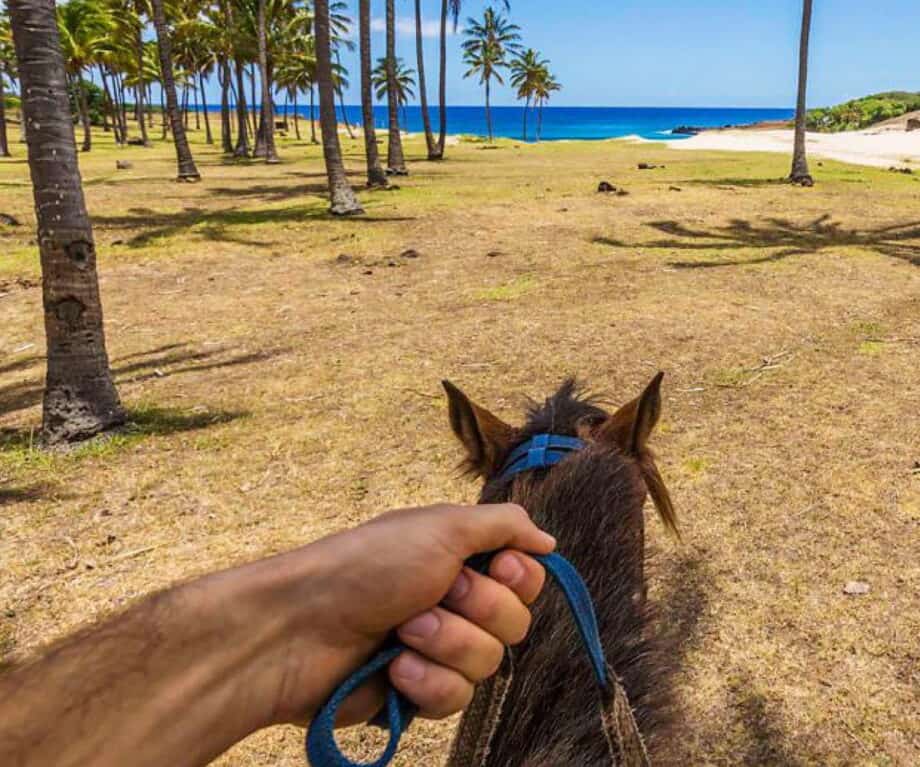
For expert riders, beginners or anyone in between, Easter Island equestrian tours offer the ultimate opportunity to explore the magnificent landscapes and ancient sites of the island.
Saddle up and prepare for a safety briefing and an equipment check before heading in the direction of well-preserved moai statue sites, ancient still-intact indigenous villages, or petrified lava caves formed many millennia ago and once believed to be a hiding place for fleeing locals during times of conflict.
With no such troubles on 21st-century Easter Island, there’s nothing left but to simply demount and enjoy both the view and sense of isolation before riding back to your restful accommodations.
If you really want to get away…
For those wanting to get away from it all, Easter Island clearly fits the bill. Considered the most remote and isolated inhabited island in the world, Easter Island is some 2,300 miles from mainland Chile and over 1,000 miles from the nearest inhabited island.

And once there, you’ll discover a heady destination of cultural intrigue, folklore, fairytale, and outdoor activities, plus a totally unique ancient past.
So, if considering a South American getaway, be sure to keep Easter Island in mind as one of the region’s prime luxury vacation spots.
Did you enjoy this article?
Receive similar content direct to your inbox.
Please enable JavaScript in your browser to submit the form


